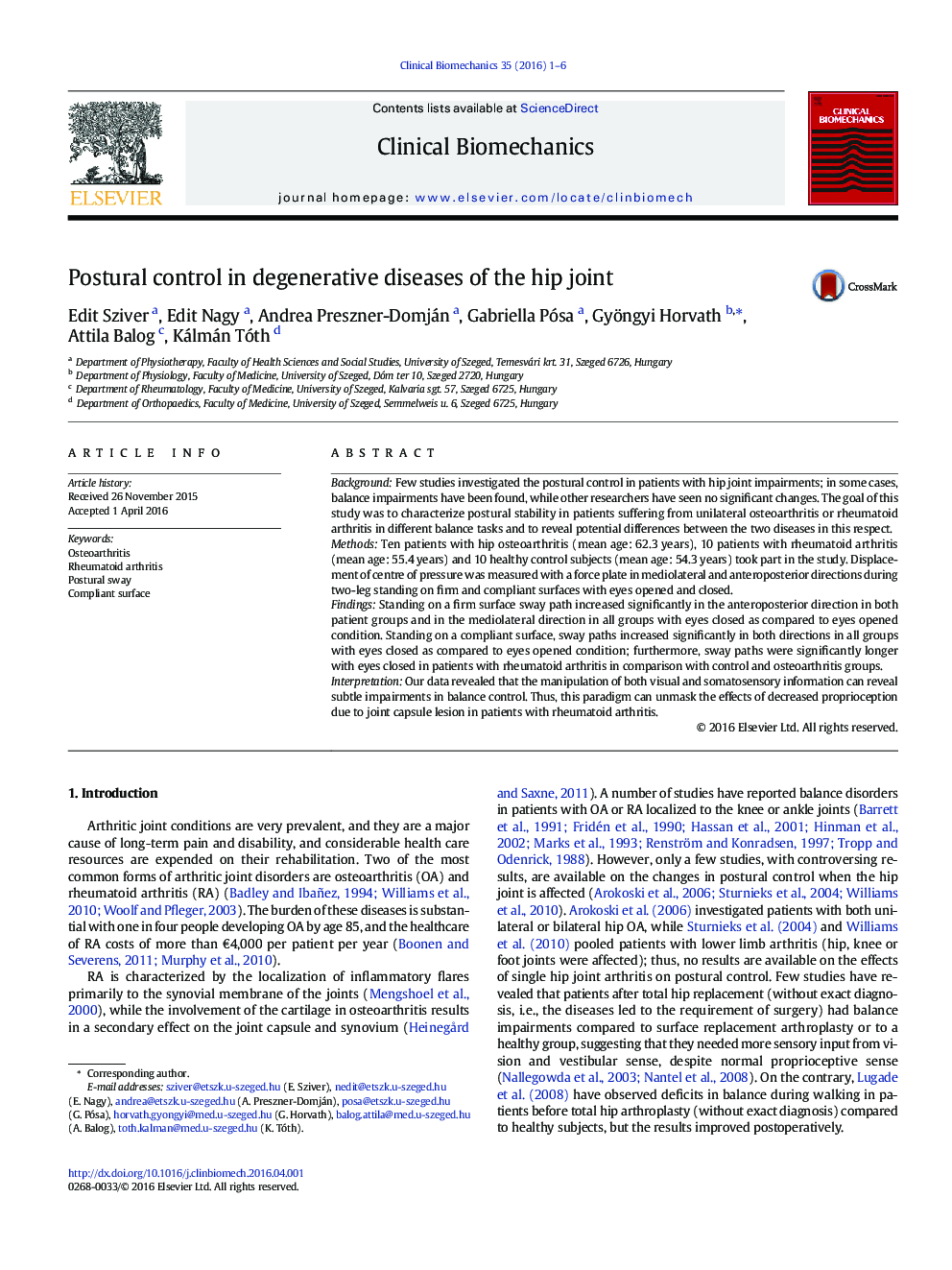| Article ID | Journal | Published Year | Pages | File Type |
|---|---|---|---|---|
| 4050101 | Clinical Biomechanics | 2016 | 6 Pages |
•The change in the postural stability in patients with hip abnormalities is unclear.•This study measures postural control under four different conditions.•Coxarthrosis did not influence the postural control significantly.•Rheumatoid arthritis enhanced the sway path standing on foam surface with closed eye.•Combination of disturbing factors revealed subtle impairment in balance control.
BackgroundFew studies investigated the postural control in patients with hip joint impairments; in some cases, balance impairments have been found, while other researchers have seen no significant changes. The goal of this study was to characterize postural stability in patients suffering from unilateral osteoarthritis or rheumatoid arthritis in different balance tasks and to reveal potential differences between the two diseases in this respect.MethodsTen patients with hip osteoarthritis (mean age: 62.3 years), 10 patients with rheumatoid arthritis (mean age: 55.4 years) and 10 healthy control subjects (mean age: 54.3 years) took part in the study. Displacement of centre of pressure was measured with a force plate in mediolateral and anteroposterior directions during two-leg standing on firm and compliant surfaces with eyes opened and closed.FindingsStanding on a firm surface sway path increased significantly in the anteroposterior direction in both patient groups and in the mediolateral direction in all groups with eyes closed as compared to eyes opened condition. Standing on a compliant surface, sway paths increased significantly in both directions in all groups with eyes closed as compared to eyes opened condition; furthermore, sway paths were significantly longer with eyes closed in patients with rheumatoid arthritis in comparison with control and osteoarthritis groups.InterpretationOur data revealed that the manipulation of both visual and somatosensory information can reveal subtle impairments in balance control. Thus, this paradigm can unmask the effects of decreased proprioception due to joint capsule lesion in patients with rheumatoid arthritis.
